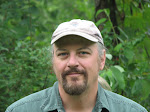Unless you were there, it didn’t matter.
The closest I ever came to earning a check in baseball was in
the summer of 1981, the strike year, selling minor league baseball tickets over
the phone for the International League, Triple- A Columbus (Ohio) Clippers. I
was a boiler-room pitchman, reading from a script, cold-calling hundreds of
businesses a day for some stupid, spurious “Business Night” promotion. Most
weeks I made less than $100, a dispirited take that soon precipitated my move
to Boston.
There was just one perk – free
tickets. No matter how many tickets I didn’t
sell, I could still get two free box seats for every game, right behind the
plate, where the scouts and player’s families, wives and girlfriends sat. I managed to catch about 30 games and due to the strike, the IL had a fair
number of prospects as big league clubs stashed talent there that in any other
year might have been playing in the big leagues – guys like Cal Ripken, Von
Hayes, Brett Butler, and from Pawtucket, Marty Barrett, Wade Boggs (who won the
batting title by less than a point), Rich Gedman, Bruce Hurst and Bobby Ojeda
(they still finished sixth, 67-73).
Although the Clippers had a few prospects on the roster –
most notably slugging Brockton native Steve “Boom Boom” Balboni (“Bye Bye” when
he struck out), SS Andre Robertson (who broke his neck in a car wreck and was
never the same) and 20-year old pitcher Gene Nelsen, (later a valuable head
–hunting reliever for Oakland) -- most of the roster was a bunch of “4-A” re-treads
that couldn’t quite make it at the next level – Marshall Brant, “Uptown” Bobby
Brown, Dave Stegman. For them, Columbus was more a destination than a stepping
stone. The irony of the enormous graveyard just beyond Cooper Stadium’s right
field fence wasn’t lost on anyone who played there.
The two guys I most remember were two of the oldest guys on
the team, both of whom started out in the Red Sox organization. Wayne Harer,
29, was a slender, switch-hitting, walk machine of an outfielder with little
power. In 1977, his first year at Pawtucket, he hit .350 with an OBP of. 451, leading
the league in both categories, yet wasn’t called up to Boston. A year later, he
hit just .247 and his career stopped one rung shy of the Baseball Encyclopedia. In 1981 for Columbus, he was just another
.270 hitter with no pop, one year away from retirement.
The other guy was outfielder-DH Dave Coleman, 30, an 18th
round pick by Boston in 1969. He had some right-handed power, an almost prospect who had the misfortune
to reach Triple-A at the same time as Fred Lynn and Jim Rice. With Yaz and Dewey already in place, he got lost in the shuffle, the fifth or sixth best
outfielder in an organization there the top four all had a shot at Cooperstown. Nevertheless, he managed to make the team in
1977 and debuted on April 13, pinch-hitting for Denny Doyle and popping up to
shortstop. It didn’t get any better from
there, and he was sent down after only nine games another 12 plate appearances,
one walk, one run and one strikeout on his career line. Even though he twice hit
more than 20 home runs in Triple-A, he never got another chance. He made the
book, and saw Fenway up close, but his MLB batting average is forever .000.
Columbus won the regular season and played Rochester in the
first round of the “Governor’s Cup,” playoffs. The Clippers dropped the first
two games of the best-of-five series to the Ripken-less Red Wings, then the
series returned to Columbus and the Clippers evened it up. The game five would
play winner would play Richmond for the
Cup. The loser would go home, and if that was Columbus, that meant Dave
Coleman’s career would end.
Now, memory being what it is, what happened next gets a
little murky – you can’t find everything on
the Internet-- but I remember most of it. I do know game five went 10 innings,
and because school was back in session, there were only a few hundred fans in
the stands. I’m pretty sure Gene Nelsen pitched the whole game for Columbus. And
with the Clippers batting in the bottom of the 10th, I think there
were two runners on base, and one of them may have been Harer. The score was either
tied 1-1 or the Clippers were down 1-0.
Then ready-to-retire Dave Coleman, he of the non-existent career major
league batting average, came to the plate in what was conceivably the last at
bat of his career, his Ted Williams moment.
I can see it still, a hard line drive soaring high over the
shortstop’s head.
Then it all gets blurry. Did it split the outfielders, hit
the wall, go over the fence? Damned if I
know. I do remember runners racing
toward home, players running from the dugout, all tumult and shouting… and then
a celebration, guys who were never going to make the majors hugging guys who
were going to, and somewhere in the middle – Dave Coleman, the hero of the
moment, being pummeled and praised and lifted up. And then I saw Wayne Harer,
another guy going nowhere, heading toward the stands, a bottle of cheap
champagne in his hand, shaking it and spraying it over our heads, then taking a
big swig, and passing it into the stands, erasing the line, celebrating that this
season, and Coleman’s career, would last – what? A few more days? Just to play another game no one would ever
remember, before a few hundred fans, for a trophy no one cared about?
Yeah. Exactly that.
from Boston Baseball July 2013



